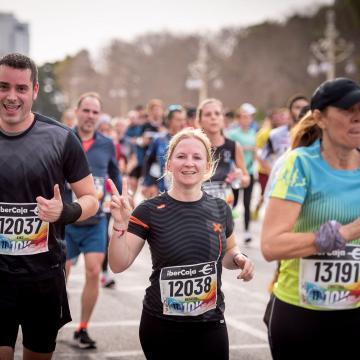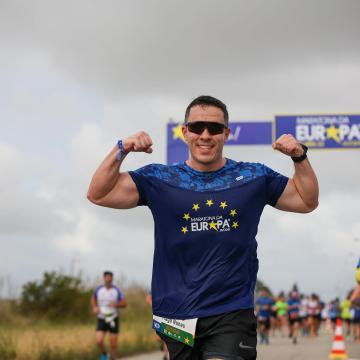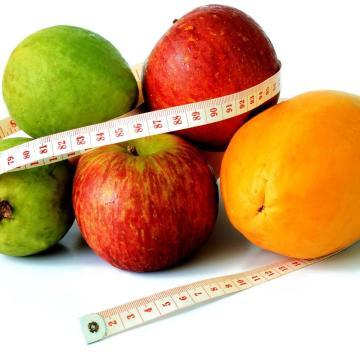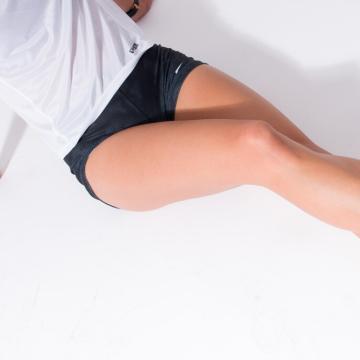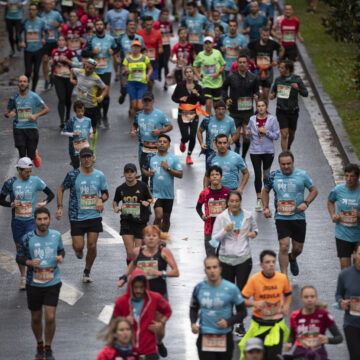Subscribe to our newsletter to find out about all the news and promotions, and automatically receive a welcome discount coupon in your email.
post -> La importancia del examen bioquímico en el deportista de resistencia
As we have already seen in previous posts, the AlimeTraining is a key factor in sports performance, especially in endurance athletes and the following moments:
- During the preparation of the competition, to achieve an optimal body composition.
- Throughout the test, to maintain peak performance during the competition.
- At the end of the competitive appointment, looking for an optimal recovery of the athlete.
However as important as the nutrition of the endurance athlete is the performance of frequent biochemical tests. It is known throughout the world that a blood test should be performed on any person once a year, but the importance of this type of analysis in endurance athletes intensifies, in such a way that it is recommended to do them every 3 months approximately.
The data obtained will be of great importance for the coach when periodizing the season with Workout and competitions as well as for the dietitian-nutritionist when designing the patient's personalized nutritional strategy. That is to say, biochemical data allow us:
- Do not compromise the athlete's health, as well as correcting possible values outside of normality.
- Periodize the season by the coach at the level of training and competitions, avoiding anemia and phenomena such as overtraining and chronic fatigue.
- Design a personalized diet plan to the objectives of the athlete that provides the energy and nutrients necessary to obtain maximum performance and good health.
When to perform endurance athlete analytics?
Well, there are some key moments throughout the season that provide relevant information about the endurance athlete, such as:
- At the beginning of the season, in order to assess the general health of the athlete as well as to have an initial reference after the vacation period.
- At the end of each training period with the aim of analyzing adaptations.
- At higher aerobic volume mesocycle (training block) to monitor the appearance of possible anemia.
- At the start of the competition phase, which must be reached in the desired state and well recovered.
- After achieving a good mark, to have future reference levels.
- With the appearance of illogical symptoms, such as muscle fatigue and weakness, dizziness, decreased weight and / or performance, etc.
Once the moments of the season are known in which it is important to carry out an analysis, it is necessary to know:
- What parameters offer us the necessary information?
- What should be the optimal results?
Pay attention to the following table:

In conclusion, the endurance athlete population of the importance of conducting medical tests such as biochemical tests and stress tests, since with sport an effort is required from the body that entails great stress at the metabolic level and whose consequences without poor planning can be serious.
Remember, physical activity is good for your health, competitive sport is not, so it is very important to carry a correct medical control and entrust training and nutrition to the relevant professionals, the Graduate/Licentiate in Physical Activity and Sports Sciences and the Graduate/Diploma in Human Nutrition and Dietetics, respectively.

Ismael Martinez Garcia
Dietitian
Collegiate Number CV00678
Master in Nutrition as a pillar in performance in endurance and ultra-endurance sports.
www.dietisticavalencia.com
Facebook - Instagram
As a humble dietician-nutritionist it is evident that I have nothing to do against these multilevel nutrition companies with billions of dollars and armies of lawyers, but I will do everything in my power to spread the word on this issue.
I can't conceive the wordlimentation without thinking about the patient's healthe, just as good health cannot be understood without properlimentation. Okay, cleared this up:
- When do you have a toothache, do you go to the mechanic?
- When do you need medication, do you go to the kiosk?
- If you have contractures, do you go to the lawyer?
And so it could be until tomorrow, illogical right? Well if you need to improve yourlimentation either for health, for sports performance or for aesthetics do not go to people without adequate training, since it is YOUR HEALTH THAT IS AT PLAY. Always go to a registered dietitian-nutritionist.
Well, to the point. With this article I do not pretend that they give me the medal for collegiate of the month in codinucova (College of Nutritionist Dietitians of the Valencian Community) to which I belong (and to which you can go to find a professional who will attend you), but make readers see the reality of multilevel nutrition companies.
Are we clients with money or patients with health?
- First of all, we will talk about TRAINING: I have patients in consultation who have gone to multilevel nutrition companies before and have been advised by their "nutritional coach" (synonymous with I have no idea about nutrition, but it looks super cool and professional) and it turned out that he had a degree in Geography! I doubt that in their career they have given Diet therapy, dietetics, nutritional pathology, drug-nutrient interaction, nutrition 1, nutrition 2, etc. And so on up to 4 YEARS OF CAREER. I certainly did not say anything related to world maps, rivers or mountains.
That is to say, the vast majority only know about nutrition the 4 courses that the company has given them (in fact, on social reds, everyone says that you join their team, without consulting the training you have, THAT IS THE SAME), but that focus on selling you products that you DO NOT NEED and on attracting customers, because don't forget, they see customers with money, not patients with health.
Beware of nutritional substitutes
- En second place eats food, not substitutes: that is, if a supplement is needed, I am the first to advise a patient, for example a recuperator in athletes or a gel during a race. BEWARE, this is not the same as a shake with a zillion nutrients that can make us replace a meal. Sirs, I'm sorry but NO.
It is important to know how to differentiate supplement (an extra to the diet, many times unnecessary) a substitute (100% times unnecessary).
Go to a professional who will never impose a substitute on you, whose first option will always be to offer youlimentos and teach you to eat.
A smoothie can never be equated to eating fruit, vegetables, dairy, meat, fish, eggs, nuts, pasta, rice, legumes, bread, etc. in a day.
- Third, of course you lose weight, if you do not eat you lose, it is evident, but paying the toll with your health. Just like if you stop eating completely ... you lose too! What it is about is learning to eat, so that you can maintain the new habits for the rest of your life. That is, do not eat less or do not eat, but eat well.
Do you see yourself drinking replacement shakes for life? right? That is why most of his clients, when they finish treatments and have to eat normally again, regain their weight, since they do not know what tolimeHow much to consume, or at what time, or quantities, or compensate for an excess. Then the rebound effect appears.
- Let's go for him Fourth point. They are committing a crime of labor intrusion. According to Law 44/2003 on health regulations, dietitians-nutritionists are those who can manipulate thelimentation of a person As far as I know, they advise substituting meals for a shake, they weigh you, measure you... I think they break said law, therefore CRIME BY INTRUSION.
- 5 point: customization. Lacking the necessary training, they cannot offer personalized solutions to each patient. For example, a patient with CKD (chronic kidney disease) could be given a protein shake and sentenced to lifelong hemodialysis in a few months, since I doubt that in their courses they have explained anything about it, in fact I doubt even of that they know what a CKD is. What do we do with a pregnant woman? And with a patient with hyperuricemia? And with irritable colon? Well, this shake itself, what does it matter, if in the course they told us that we had to sell!
We are already finishing ... point 6, the pleasure to eat: nowadays social life revolves around food. Can you imagine your cousin drinking a milkshake in Sunday's paella? Ridiculous! Or on a very cold day not having the pleasure of having a hot noodle soup, or knowing that you are going to run a marathon and not have your toast with honey or jam, etc.
Food is one of life's joys and can never be substituted for a smoothie.
And in seventh and last place… they have already been convicted! 200 million dollars in fine for its pyramid structure method, and return of money to some 350.000 affected.
PS There are many multilevel nutrition companies that do exactly this. In summary: always distrust that they try to force you to buy products as well as those "health coach, life coach etc" or people who offer substitutes.
I hope I have clarified an issue that is basic for health and that it is shared as much as possible. Someone who manipulates the health of the population without the necessary training and who puts money before well-being is A HAZARD TO PUBLIC HEALTH.

Ismael Martinez Garcia
Dietitian
Collegiate Number CV00678
Master in Nutrition as a pillar in performance in endurance and ultra-endurance sports.
www.dietisticavalencia.com
Facebook - Instagram
La hyperbaric oxygen therapy improves sports performance and is crucial for runners and runners since: it prevents injuries, increases the volume of training, improves inflamed tissues, promotes bone repair ... that's why we want to share with you this new oxygenation technique.
This hyperbaric oxygenation therapy consists of the patient breathing high doses of oxygen in a hyperbaric environment. No type of substance harmful to health is ingested, only almost 100% pure oxygen.
When breathing oxygen in high doses, it generates a strong hyperoxia, it increases the dissolved oxygen in the blood that reaches the poorly irrigated tissues. Hyperoxia produces a long chain of beneficial physiological effects for the patient. It is a type of medical treatment that is used to treat a variety of diseases.
In the human body, oxygen represents 65% of its mass. Oxygen plays a vital role in the development of life for humans, allowing the generation of energy at the cellular level.
How does hyperbaric oxygenation therapy work?
If the pressure of the aire atmospheric in a certain proportion, the pressure of O2 will increase in the same measure. Thus, Oxygen is transported in the blood together with Hemoglobin (Hgb) inside the red blood cells. Thus, the patient will receive much more oxygen compared to a breath of airand at sea level.
If we increase the amount of O2 breathed per mask and add a pressurized environment (Hyperbaria), the diluted O2 in the blood and in all body fluids (blood, lymphatic, joint and cerebrospinal) increases.
By this principle the treatments with Hyperbaric Chambers help and make healing processes more efficient, deflating tissues, improving metabolism, reducing wound recovery times, accelerating post-surgical processes, synergizing with other treatments and preventing diseases.
What does it feel like during a hyperbaric chamber session?
The patient remains lying down inside the chamber, although they can sit as they are more comfortable, it is not necessary to lie down during the entire session.
At the beginning of compression you will notice the circulation of aire inside the chamber, due to the change in pressure, you will notice that your ears start to plug (no need to worry, it is a sensation like when you land with the plane or when you go down a mountain pass with the car, if your ears were plugged simply by performing the action of swallowing saliva you will notice that they are no longer.
The compression process lasts a couple of minutes until 1.4 ATM is reached inside the chamber, then the patient will put on the mask with which he will breathe almost pure oxygen.
During the duration of the session you will be able to answer a phone call or browse the internet, even listen to music, read a book, also due to the feeling of well-being, you will be able to rest and sleep.
During the entire session the patient will be assisted by a professional, if at any time he feels unwell, simply by pressing an internal button in a few seconds he will be able to leave the chamber.
The treatments last 60 or 90 minutes, depending on the medical prescription indicated on your first visit.. When the session is finished, the decompression process begins, in which the patient will notice a new sensation in the ears as if they were creaking, (there is no need to worry, it is a sensation of adjustment of the ears to return to their normal this, like when you take off with a plane or when you go up a mountain pass with the car).
How many sessions are necessary?
The number of sessions of hyperbaric oxygenation therapy is indicated by the doctor and will depend on the pathology, the patient's illness, they can be daily, weekly sessions, and several times a day or a week.

How do hyperbaric oxygenation treatments apply?
Sport
The hyperbaric oxygenation treatment accelerates the recovery and rehabilitation of tissues, ligament, tendon, joint and muscle injuries.
Trauma
The hyperbaric chamber application is essential for recovery from all trauma or injury.
Rehabilitation
The significant increase in oxygen transported by the blood as a result of hyperbaric oxygen treatment produces an increase in blood flow.
Rheumatology
The action of hyperbaric oxygen dilutes high doses of O2 in the blood plasma, being quickly used by the cells and reaching tissues where perfusion is compromised.
Medical clinic
Hyperbaric oxygen is essential and very effective in reducing, reversing or eliminating the symptoms generated by Fibromyalgia.
wounds and ulcers
The increase in oxygen in the blood achieved by the hyperbaric chamber is anti-inflammatory, it stimulates the formation of new blood vessels.
Neurology
Treatment with a hyperbaric chamber produces an increase in cerebral blood flow, it is anti-inflammatory from vasoconstriction.
Oncology
The strong hyperoxia generated by the hyperbaric chamber makes oxygen reach all the tissues of the body, including the tumorous ones, reducing their growth and favoring their retraction.
What benefits are obtained?
- Recovery in less time from post-training or competition wear and tear.
- Increase the volume and frequency of workouts.
- Decreases the chance of injury.
- VO2 Max increase.
- Reduction of inflammation of damaged tissues.
- Promotes bone formation and repair.
We help you improve and stimulate the immune system through hyperbaric oxygenation therapy, we seek to maintain your health and a good quality of life.
Improve performance, injury recovery, wound recovery, recovery of patients with fibromyalgia, diabetic foot, migraines, etc.
If you need more information, please contact us at:

contacto@clinicahiperbarica.com
699 52 16 56
Source: Hyperbaric Clinic
PERFORMANCE AND PHYSICAL WEAR
Having sex: before or after doing sports?
Is it good to have sex before a sports competition? Some specialists claim that it helps concentration and improves performance. Others, on the other hand, argue that physical wear and tear occurs that can negatively influence the athlete.
And sexo before doing sports really Does it affect performance?
Having sex helps us to be more relaxed in a sports competition.

Toni Garai - Sexologist
Athletes, both they and they ask themselves more and more: Is it advisable to have sex before a sports competition?
There are many who think that sexual abstinence is positive before exercising because it decreases energy, but other trainers and scientists do not think the same.
The debate is more than open. There are for example top-level cyclists that achieve excellent marks, we refer to international events such as the Tour or the Giro, which say that they give up sex at least three weeks before the competition to be in shape. Being so my question is; What about elite athletes who compete weekly?
There are two factors that can lead athletes to believe that their performance decreases. In the first place: the sexual act culminates in a period of relaxation that is easily mistaken for fatigue and, on the other hand, the belief in semen as an energy substance.
There is a study to which many specialists allude, with data that confirm this. 'A study carried out in the United States in 1995 tested the aerobic capacity of a group of athletes who had had sexual intercourse in a period of less than 12 hours. The findings surprised many, as there was no difference compared to the other group of men who had not had sex. '
have sexual relations before doing sports does not affect strength or endurance and it helps us to be more relaxed. In addition, with excitement, the body releases testosterone, a determining hormone in sports performance since it can increase muscle mass, competitive drive and strength of the athlete.
Testosterone is the main male sex hormone although women also have it to a lesser extent. Generally, testosterone levels decrease with age, many times giving rise to different pathologies such as osteoporosis, obesity, the risk of heart attack or loss of muscle mass among others.
Increased breathing rate, repeated movements or stretching of tendons, ligaments and muscles are common symptoms in sports and sex
Is there still who thinks they are incompatible? Do not make excuses.

Many popular brokers are convinced that running in the morning on an empty stomach is the best strategy for lose fat. Fasting training made it fashionable Bill phillips who defended that 20 minutes of aerobic exercise first thing in the morning without having eaten breakfast is more effective to consume fat than one hour of aerobic exercise after eating.
With this kind of training which we pursue is that carbohydrates stored in the liver are in a very low level, therefore the body has to turn to fats as a source of energy.
Remember that the reserves of carbohydrates in the body are limited, their duration ranges from 2 and 3 hours, while the fat ones are unlimited.
A person of about 70 kilos would run a half marathon with the calories provided by carbohydrates while he could run 40k with those provided by fat.
Some researchers have observed that high-fat, low-carbohydrate diets stimulate muscle capacity of using fat as fuel, but this "adaptation to fat" does not translate into an increase in athletic performance since muscle decreases its ability to use muscle glycogen and therefore decreases their ability to work at high intensities and anticipates the onset of fatigue (Bruke et al., 2000, Journal of Applied Physiology)
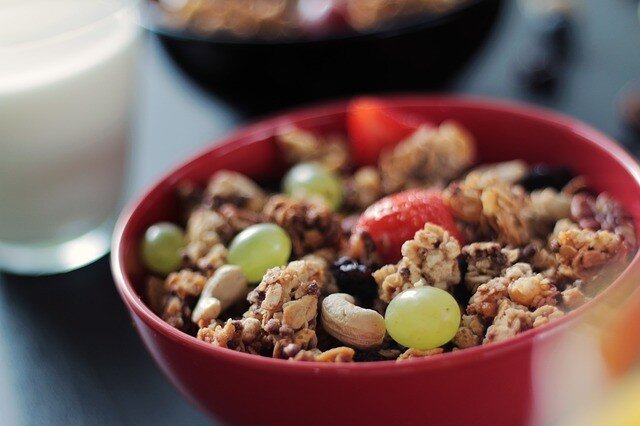
Some of the drawbacks of training on an empty stomach are:
There is possibility of hypoglycemia
Inability to perform Workout very intense or too fast.
There is a increased risk of dehydration
We can coming home feeling very hungry and eating unhealthy things and in disproportionate amounts.
We think it's best to eat a low-fat, low-calorie breakfast before heading out to work out. We recommend a glass of juice and a toast for example. Half an hour before. They are some 150 Kcal, but we make sure that the central nervous system does not "starve" and we avoid drops in blood glucose. Avoid fatty and protein products, as their digestion is much slower.
Outstanding image: running.es
El invisible training It is what differentiates a good runner from a better runner. It is everything that the popular runner performs or should perform to continue growing and enhancing its sports performance And yet it is invisible to the eyes of the coach or physical trainer, as it is done outside of regular training. It's that one training that we carry it out passively through habits that lead to proper muscle development in a harmonious and physiological way.
It encompasses a set of factors as broad as the activities we carry out in our routine lives, but we will mention the following:
- Rest
- our tolimentation
- Hygiene and body care
- Psychological factor
- Recovery tasks (massages, hydrotherapy, ..)
Although it seems silly the oral hygiene It also influences our performance, don't forget to clean your teeth 3 times every day.
The invisible training is present, practically in all tasks of our daily life: sleeping, eating, at work, ... and therefore bad habits will always go against us when it comes to achieving our goals.
The athlete must carry out a invisible training in the eyes of the coach and the physical trainer, taking responsibility for him in such a way that favors his preparation for the sports training or demands of the competition.
This invisible training will allow to shorten the recovery period, avoid injuries and overloads, replenish the hormonal systems and the necessary energy substrates, as well as repair the muscle fiber more quickly. Having said that,
"The athlete must be an athlete 24 hours a day"
Doing running it does not imply just putting you runr. If you decide to start taking care of yourself by running, it is important that you take into account certain factors that will determine whether your training sessions running They end up being a really healthy experience for you. One of these factors is the need for correct hydration for runners. Maintaining the appropriate level of water in your body is essential to not endanger your health and have good sports performance, so it is important that you take into account the following tips for your correct hydration while doing running.
Drink without waiting to feel thirsty, to prevent the fluid level from falling.
- Hydrate for at least half an hour before you start running and also take 50 grams of carbohydrates if you are going to do a long and intense exercise.
- After half an hour of running, start drinking water. From here, you drink about 200 ml every quarter of an hour.
- Do not drink liquids that are too cold, because they can produce a thermal shock.
- Keep hydrating after exercise, replenishing any losses you may have had. Try to ingest an aqueous solution with a saline concentration and 50 grams of carbohydrates to regenerate your body.
- Also hydrate your footl, regularly applying a moisturizing and sun protection lotion, which prevents unnecessary damage from the sun's rays.
- Choose a comfortable and easy-to-carry equipment that allows you to move around without problems.
- Choose technical t-shirts de breathable fabric, which prevent the accumulation of sweat on your skin.
- Make sure your clothing protects you from extreme temperatures, both in winter and summer.
- Choose visors or caps, that allow you to protect your eyes from the sun.
By following these tips, you can now enjoy your running!
Post image source: http://commons.wikimedia.org/wiki
Author: © magnus manske
Much has been said and the issue of the importance of oxygen consumption in relation to sports practice. And in truth that is a capital question in relation to sports performance, but partly overrated. READ MORE
 Here we leave you a very interesting article from CMD sport where Eneko Larumbe (doctor in Psychology who works as a sports psychologist and is a professor at the UEM) talks to us about the topic. According to Larumbe: "if you are clear about your goals, it is easier to maintain consistency, both in training and, later, in competition."
Here we leave you a very interesting article from CMD sport where Eneko Larumbe (doctor in Psychology who works as a sports psychologist and is a professor at the UEM) talks to us about the topic. According to Larumbe: "if you are clear about your goals, it is easier to maintain consistency, both in training and, later, in competition."
“We need to set goals because they are the basis of our motivation. Without them you cannot persevere or improve your athletic performance ”. This is how the doctor of psychology from the Uned, Eneko Larumbe, considers it. According to this professor at the Uned master's degree in physical activity and sport psychology, setting goals "is not only limited to the field of competition, but also, and especially, in our training sessions." Likewise, it is crucial that this definition of goals is the most realistic and consistent with our possibilities. And it is that demanding too much or too little can lead to frustrations that end up demotivating us and lead us to abandonment, first of training and, at the end, of the competition.
Is it positive to set goals?
Of course. They are very useful. They serve to help us know where we need to invest our efforts, time and resources. If you are clear about your goals, it is easier to maintain consistency, both in training and, later, in competition.
Can we all achieve the same goals?
No. And that aspect is essential to keep in mind when defining our own goals or horizons. Each athlete must adapt his objectives by virtue of his real level of practice and skill, his real physical possibilities, the moment in which he is. When determining our goals it is very important to adapt them to what we can really achieve. What some athletes can achieve, others do not have to achieve. Each one has its possibilities and both the goals and the process and the resources to be used to achieve them vary according to each athlete.
What should we take into account when defining them?
As I already pointed out, it is very important to be very objective and realistic with your own possibilities. It is very useful to set goals that are achievable but that, at the same time, constitute an appetizing challenge so that the athlete perceives progression but without getting burned or bored. Likewise, it is necessary that these goals be as concrete and specific to be able to organize and distribute them over time.
Can we define them alone or is it better that someone help us?
Having a coach always helps. That is well known by the teams and, obviously, the athletes of the level of individual disciplines. The advice of an expert will always help us to get more right, not only in the definition of the goals, but also in the processes and times to be set for their achievement. This expert will determine the real possibilities of each athlete by virtue of variables such as their complexion, level of initial technique and dexterity of execution and their potential for projection in the future, etc.
Goals should be set in the short, medium and long term?
Indeed. They should be set as if they were a path or a ladder, so that each goal is part of an overall process of progression. Your concatenation will help us to obtain satisfaction each time we reach a goal that will help us to motivate ourselves to face the next one with enthusiasm. In short, we must set ourselves goals in the short, medium and long term because if we only set them short we run the risk of stagnating and if we only determine them in the long term, we can end up feeling discouraged before a very distant horizon and abandon.
What problems can arise in setting goals?
The most important, impatience or haste. Goals are not achieved in the first minute. And that is an idea that, unfortunately, many beginners and even mid-level athletes fall into. This is because, as a general rule, there is a tendency to value results more than other variables related to sports performance and that is very dangerous for our balance between motivation and satisfaction and subsequent performance in competition. Ultimately, goals should be set that take into account both the performance itself and the skill, that is, that specifically consider the training phases and not only the results obtained in competitions.
However, for many athletes, precisely the competitions are the Great Goal ...
True, but the athlete must know what position each competition occupies in their particular set of goals. Most novice runners, for example, do not set a systematized schedule of goals and, because of this, it is just as dangerous not to meet expectations as it is to exceed them.
And so?
Not adequately setting goals does not help to mentally control and, therefore, to channel properly, adverse or favorable results. We go over or fall short of expectations in a competition due to lack of that channeling and systematization of our objectives and the consequences of this, often, can end up leading to frustration for the athlete.
Therefore, is it crucial to know what our chances really are in each competition?
Indeed. And that is derived from a meticulous comparative analysis between what we expected a priori to achieve at the end of each goal and what we have obtained by crossing it, as well as the causes of all this. And in this process, I insist, the help and advice of an expert can prevent us from getting carried away more by feelings than by reasons.
Nutrition in the sports world is truly important and fundamental to obtain the best results in training. There are multitudes oflimenutritional elements that should be present in a healthy diet, and on many occasions it is truly difficult to include these elements.limentos in our alimedaily ntation. For this reason, we are going to meet five super tolimeVery healthy and easy to consume snacks that we can find in any establishment and that will improve our performance on the bike.
1. Forest fruits
The fruits of the forest are, in addition to being delicious, onelimentos very rich in antioxidants of all kinds. Antioxidants help fight the premature aging of our cells, in addition to neutralizing the effects of free radicals generated by our body when we convert oxygen into energy. This is of vital importance in the case of cyclists, who generate a large amount of free radicals during cycling training due to the large amount of oxygen consumed by our body.
Ideas: A tasty berry smoothie
To consume a good amount of forest fruits with their corresponding antioxidants, the best we can do is make a tasty and nutritious forest fruit smoothie. To prepare the shake:
■We mix in a jar or suitable container a cup of skimmed milk, half a cup of frozen blueberries, a cup of frozen blackberries, a cup of frozen strawberries, a teaspoon of sugar and a pinch of vanilla and pass it through the blender until we a smoothie without lumps. With this tasty berry smoothie we get 300 mg. of calcium for our bones, approximately 8 gr. of protein and a generous amount of antioxidants, very beneficial when training by bicycle at airand free.
2. The Salmon
Salmon, like other types of oily fish, is alimeVery rich in proteins of high biological value with a very moderate fat content. For every 100 grams of salmon meat, there are only 11 grams of fat, which is also very rich in beneficial omega-3 fatty acids. Omega-3 fatty acids lower cholesterol and triglyceride levels in our body, increase blood fluidity and significantly improve our cardiovascular system, improving blood flow to our muscles and thus the performance of cycling training .
Ideas: The salmon where we put tuna, and vice versa
To consume a good amount of omega-3 fatty acids and benefit from their positive effects on our body, the best thing we can do is replace the tuna that we normally consume in our meals with salmon: in salads, in sandwiches, grilled or boiled , as a side dish or raw. The limit is in our imagination when consuming it and we can always alternate its consumption with that of other oily fish such as tuna or sardines, to avoid falling into monotonylimeand benefit from a rich and varied diet.
3. The Pasta
Something that cannot be missing in the diet of any cyclist is pasta. Pasta is a source of complex carbohydrates of high biological value, which allow us to maintain the energy of our muscles for much longer on long-distance routes. Two cups of dry pasta represent about 80 grams of high-quality carbohydrates on our plate, very important to replenish our body's glycogen stores.
Ideas: Pasta and clams to increase our iron and zinc levels
Many regular athletes have very low levels of iron and zinc in their bodies, leading to poorer athletic performance and poorer immune defense. One can of clams contains the equivalent of 24 mg. of iron in our blood (the recommended daily RDA is 10 mg for men and 15 mg for women), in addition to containing more than 2 mg. zinc, a very important mineral that supports our immune system (RDA of 15 mg of zinc). For the best results, there is nothing better than sautéing a can of clams with a couple of cups of pasta (once cooked) to get a good amount of complex carbohydrates, iron and zinc and thus improve the results of our cycling workouts .
4. Red Peppers
Vitamin C is one of a cyclist's best friends as it helps us stay healthy and recover more effectively after training. One cup of chopped red bell pepper contains more than 140 mg. of vitamin C, an amount greater than that provided by an orange and more than double the recommended daily amount (RDA). Red peppers help reduce muscle damage caused by free radicals and boost our immune system, making us less susceptible to colds and other common illnesses.
Ideas: A bag of chopped red pepper for any route
To consume a good amount of red pepper in any route we take, we can chop a pepper and place it in a bag with a hermetic seal. In this way, when we stop to eat a sandwich or any other snack, we can take advantage of the pepper to enjoy a healthy extra crunchy sandwich with an optimal supply of vitamin C. Another good idea is to add it in salads, providing a touch of color and benefits nutritious to the plate.
5. Sweet potatoes
Sweet potatoes are another great source of complex carbohydrates ideal for maintaining energy on longer bike rides. These "sweet potatoes" also provide a good amount of beta-carotene, a natural antioxidant capable of fighting cancer, protecting our muscles from free radicals produced during exercise and increasing blood flow in our body. A medium-sized sweet potato can provide about 15 mg. of beta-carotene to our body, something that never hurts our health and our sports performance.
Ideas: Sweet potato saute or sweet potato puree
■ For the sauté: Peel and cut a sweet potato into small cubes. Add a little olive oil to a frying pan and sauté the sweet potato until soft with a little chopped onion and a touch of cinnamon. Serve on a plate and enjoy.
■ For the puree: Peel and cut a couple of medium sweet potatoes into several pieces. Cook in plenty of water with a pinch of salt and olive oil until tender, just like a potato. Pass through the raisin-puree and serve as an accompaniment to a dish with a little grated nutmeg on top.
What is a stress test?
The stress test is a widely used procedure in sports medicine that consists of evaluating the body's response during exercise. A basic condition is the standardization of the procedure, that is, that the way it is carried out is always the same, in order to be able to compare the results between athletes and the individual evolution of any of them.
What is the purpose of the stress test?
The essential objectives of a stress test are the health diagnosis (confirming the absence of diseases, mainly cardiac) and the assessment of the athlete's functional capacity (the ability to exercise). After the procedure, data are obtained that allow medical advice on training, determining the recommended exercise intensities to achieve an improvement in sports performance.
Are there different types of stress tests?
Stress tests can be performed on a variety of equipment. The most used are the treadmill and the ergometric bicycle, one or the other being able to be used depending on the patient's situation or the sport practiced.
Different protocols can be used in the test procedure. The most recommended in athletes are those that involve progressive increases in workload, with a maximum duration of between ten and fifteen minutes, with direct analysis of oxygen consumption, and reaching maximum levels of effort.
What values are analyzed during the stress test?
According to the recommendations of the Spanish Society of Cardiology (1), it is essential to perform an electrocardiogram before the test, and continuously monitor (view) the electrocardiogram during exercise and for at least 3-5 minutes during recovery.
In stress tests for athletes, direct gas analysis (measuring the oxygen consumed and the carbon dioxide eliminated) allows an exact determination of the maximum oxygen consumption and the precise detection of the aerobic and anaerobic thresholds. Indirect procedures (using mathematical formulas), especially in submaximal tests, are much less reliable.
How are training and stress testing related?
Oxygen consumption is the most appropriate determination to measure the capacity to perform aerobic exercise: a higher oxygen consumption is typical of well-trained athletes. The evolution of oxygen consumption is parallel to the improvement of sports performance, and allows the increase in physical capacity to be objectively measured.
The aerobic and anaerobic thresholds allow you to set the ideal intensity of aerobic (spinning) and anaerobic (series) training, to optimize performance, and recommend competition rhythms.
Is the stress test safe?
In an environment prepared to carry out stress tests, it is necessary to have the necessary equipment to respond to any emergency: emergency equipment and a defibrillator. The personnel performing the test must know the procedures to be applied in the event of cardiovascular complications.
These guidelines are essential, despite the fact that complications occur in 1 in 12.500 stress tests in healthy individuals
 Exaggerated protein intake and muscle mass growth have always been wrongly associated. In other words, our muscles would grow thanks to an abundant intake of alimentos rich in proteins. But contrary to what is supposed, the extra protein amount is not who manages to increase muscle mass, but rather it is the exercise that achieves it, the strength exercise and endurance, such as weightlifting in the gym fitness.
Exaggerated protein intake and muscle mass growth have always been wrongly associated. In other words, our muscles would grow thanks to an abundant intake of alimentos rich in proteins. But contrary to what is supposed, the extra protein amount is not who manages to increase muscle mass, but rather it is the exercise that achieves it, the strength exercise and endurance, such as weightlifting in the gym fitness.
Now, What is the most suitable diet for an athlete? What is the balance?
The diet of an athlete should have a normal and adequate protein amount, but not excessive, since proteins They are necessary to build and repair muscle and other organic functions such as producing hormones and red blood cells, among others.
But any excess protein is used by our metabolism to obtain energy when carbohydrates are scarce, or to be stored as glycogen or fat.
| "Diets high in protein and low in carbohydrates are not recommended for athletes, since they provide little energy for intense training." |
It is very important to note that diets rich in protein and low in carbohydrates are not recommended for athletes, as they provide little energy for intense training.
Therefore even bodybuilders need carbohydrates on the diet for a demanding training program.
Protein requirements or needs vary according to each individual. The table below shows us the safest and most appropriate recommendations as the case may be.
| Situation | Gr. Of proteins / kg. of body weight |
| Sedentary adult | 0.8 |
| Adult amateur athlete | 0.8-1.5 |
| Adult athlete endurance | 1.2-1.6 |
| Adult to build muscle | 1.5-1.7 |
| Adult who restricts calories | 1.8-2.0 |
| Maximum adult requirement | 2.0 |
| Mean intake of male athletes | 1.2-2.0 |
| Average intake female athletes | 1.1-1.7 |
An athlete usually ingests more protein than he needs in his daily diet, and as we have mentioned previously, there is no scientific evidence to corroborate that a protein intake greater than 2.0 grams per kilo of body weight supposes some advantage to the size or strength of the muscles .
What should be clear is that neither excess nor lack of protein is adequate in the diet of an athlete.
The alimeprotein they are needed daily. An example to cover daily needs would be the following option:
- in the breakfast: have a cup of milk.
- in the food (lunch): consume about 200 gr. defatted chicken or beef breast + 1 yogurt.
- in the Dinner: consume 150 gr. of fish meat.
Always accompanied bylimeSnacks rich in carbohydrates, to ensure adequate energy intake and thus a definitive improvement in sports performance.In conclusion, we must make it clear that if a person wants to increase their muscle mass, they should not only resort to proteins, but also carbohydrates, which provide the energy and nutrition that the muscle mass needs to be able to carry out the training. of strength and endurance.
It is the exercise routine itself that achieves this increase and muscle growth.
Whenever there are doubts about nutrition and the right proportions to maintain good health, you should go to a nutritionist or specialist doctor.
Now, What is the most suitable diet for an athlete? What is the balance?
The diet of an athlete should have a normal and adequate protein amount, but not excessive, since proteins They are necessary to build and repair muscle and other organic functions such as producing hormones and red blood cells, among others.
But any excess protein is used by our metabolism to obtain energy when carbohydrates are scarce, or to be stored as glycogen or fat.
| "Diets high in protein and low in carbohydrates are not recommended for athletes, since they provide little energy for intense training." |
It is very important to note that diets rich in protein and low in carbohydrates are not recommended for athletes, as they provide little energy for intense training.
Therefore even bodybuilders need carbohydrates on the diet for a demanding training program.
Protein requirements or needs vary according to each individual. The table below shows us the safest and most appropriate recommendations as the case may be.
| Situation | Gr. Of proteins / kg. of body weight |
| Sedentary adult | 0.8 |
| Adult amateur athlete | 0.8-1.5 |
| Adult athlete endurance | 1.2-1.6 |
| Adult to build muscle | 1.5-1.7 |
| Adult who restricts calories | 1.8-2.0 |
| Maximum adult requirement | 2.0 |
| Mean intake of male athletes | 1.2-2.0 |
| Average intake female athletes | 1.1-1.7 |
An athlete usually ingests more protein than he needs in his daily diet, and as we have mentioned previously, there is no scientific evidence to corroborate that a protein intake greater than 2.0 grams per kilo of body weight supposes some advantage to the size or strength of the muscles .
 What should be clear is that neither excess nor lack of protein is adequate in the diet of an athlete.
What should be clear is that neither excess nor lack of protein is adequate in the diet of an athlete.
The alimeprotein they are needed daily. An example to cover daily needs would be the following option:
- in the breakfast: have a cup of milk.
- in the food (lunch): consume about 200 gr. defatted chicken or beef breast + 1 yogurt.
- in the Dinner: consume 150 gr. of fish meat.
Always accompanied bylimeSnacks rich in carbohydrates, to ensure adequate energy intake and thus a definitive improvement in sports performance.In conclusion, we must make it clear that if a person wants to increase their muscle mass, they should not only resort to proteins, but also carbohydrates, which provide the energy and nutrition that the muscle mass needs to be able to carry out the training. of strength and endurance.
It is the exercise routine itself that achieves this increase and muscle growth.
Whenever there are doubts about nutrition and the right proportions to maintain good health, you should go to a nutritionist or specialist doctor.
On some occasions, a high training volume can harm rather than help the athlete to improve the level of cardiovascular and muscular conditioning and their sports performance. An athlete who trains excessively and without taking adequate rest periods is at risk of developing injuries and other health problems. When exercise becomes an uncontrolled addiction, it can result in a complex condition known as "overtraining syndrome." This is characterized by various physical and psychological signs and symptoms that affect the training and performance of athletes.
Article provided by the Gatorade Institute of Sports Sciences
By: Flavia Meyer, MD | Federal University of Rio Grande do Sul | Porto Alegre, Brazil. Gatorade Sports Science Institute
The most common manifestation of overtraining is a decrease in athletic performance, which is not recovered with short periods of rest. The athlete looks tired and without spirits. And you usually increase the amount of training in the mistaken belief that it will improve your performance. This can lead to a vicious cycle of further deterioration and sports injuries.
The coach and athlete should be alert to the following manifestations of overtraining:
Physical Manifestations
-Decreased performance
-Excessive fatigue during the day, lack of interest in everyday tasks
-Difficulty relaxing
-Increased pulse at rest
-Increased pulse and lactate level at a submaximal level of exercise
Sore muscles
-Injuries that are usually the result of work overload and that do not improve with physical therapy
-Nausea and upset stomach, poor appetite
-Susceptibility to infections, especially respiratory infections
Psychological Manifestations
-Difficulty concentrating
-Tendency to forget
-Difficulty to sleep
-Emotional instability
Many athletes are at higher risk of developing overtraining syndrome during the competitive stage of their annual training plan, when they play several sports simultaneously, or when they try to improve their level of training with a large volume of work in a short period of time. .
An alteration in immune function and altered responses of the endocrine and nervous systems have been mentioned as possible mechanisms responsible for the overtraining syndrome. On some occasions laboratory tests have revealed an alteration in the levels of cortisol and epinephrine in the urine, but the diagnosis is made using a combination of the above symptoms.
Prevention Strategies
The manifestations of overtraining tend to be different for each athlete, subjective and individual. However, it is important that athletes, coaches and health professionals recognize the symptoms and risk factors of overtraining so that they can prevent it and avoid its most serious consequences. Prevention strategies include proper recovery, adjusting training volume, minimizing psychological stress, and eating a balanced diet.
Summary
The most common manifestation of overtraining is a decrease in athletic performance which does not improve with short periods of rest. The athlete usually increases the amount of training in the mistaken belief that it will improve performance. This can lead to a vicious cycle of further deterioration and sports injuries. Coaches should be alert to signs and symptoms of overtraining, which may be different for each athlete. It is recommended to adjust the training volume, have adequate rest periods and eat a balanced diet to avoid overtraining syndrome.

We already know that during the exercise Oxygen consumption and its use by the body's cells are increased, this generates a greater production of free radical that can cause the oxidation of lipids of cell membranes and cause structural damage.
Our body also has its own defenses against these free radicals and it has been shown that regular and moderate physical exercise increases and improves the functioning of the defense system.
But sometimes, the activity exceeds our anaerobic threshold and a maximum effort is made that causes the imbalance between the capacity antirust of the organism and the free radicals generated during exercise.
The role of antioxidant supplements has always been controversial, but most studies confirm that athletes have higher requirements for this type of substance, among which are Vitamin E.
However, the ideal doses in these cases have not been concluded, but it is known that vitamin E is especially useful in intense exercises, that exceed the anaerobic threshold or that are carried out at altitude.
Research has shown that on these occasions, with this level of activity and its particularities, vitamin E supplements reduce the muscle damage, which decreases muscle fatigue, and promotes your speedy recovery.
So, vitamin E protects the muscle from intense physical exertion and indirectly improves sports performance.
In other words, vitamin E supplements do not improve the body's physical abilities or allow personal records to be overcome, but by promoting recovery and preventing muscle damage, they have an indirect impact on the athlete's performance.
In the studies carried out, the doses of vitamin E or tocopherol they range between 300mg and 800mg, for a period of between 2 and 4 weeks.
Of all forms, the doses are not confirmed, so if you are one of those who make a great physical effort and experience subsequent fatigue, it is advisable to consult with a suitable person who, according to yourlimentation and your activity design your own supplement consumption plan.
On the other hand, for all of us who carry out physical activity on a regular basis, but of moderate intensity, the ideal is not to stop providing this vitamin with our alimentation, which we can obtain by ingesting vegetable oils, nuts, wheat or whole grains, green leafy vegetables and legumes.
- Running shirt FRONCODINES 2024 model unisex de short sleeve.
- technical t-shirt Limited Edition.
- Knitwear cell technology.
- Printed design on digital sublimation.
- Sublimation guarantees total breathability without gaining weight.
- Flat seams and printed anti-scratch label.
- Treatment for fast dry “DRY-TEC+”.
- Transmission Anti-friction “SOFT-LIGHT”.
- Treatment for color fixation "DC4".
- Ergonomic front pattern and back panel longer back.
- Seated style sleeve.
42K · All rights reserved




